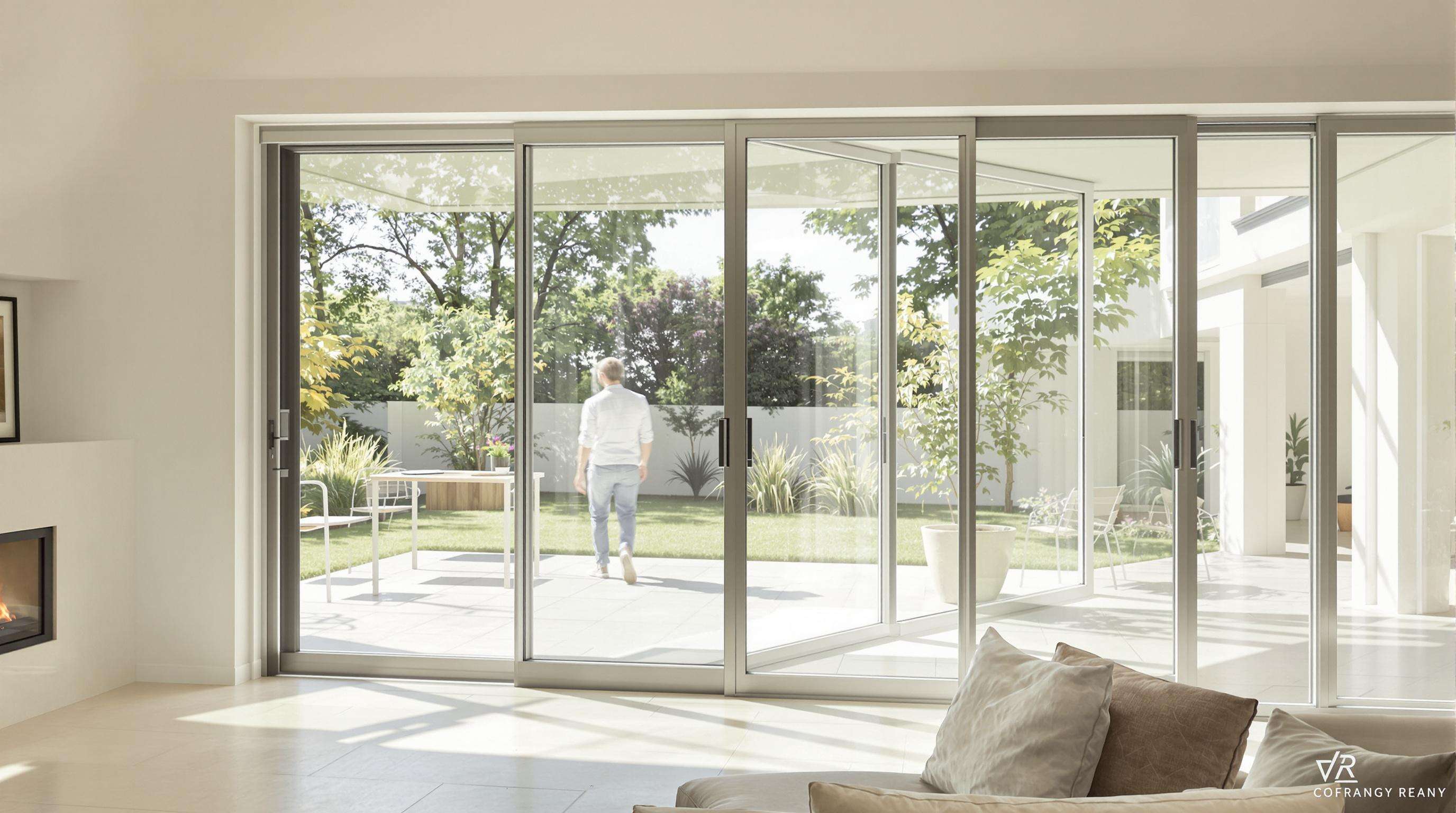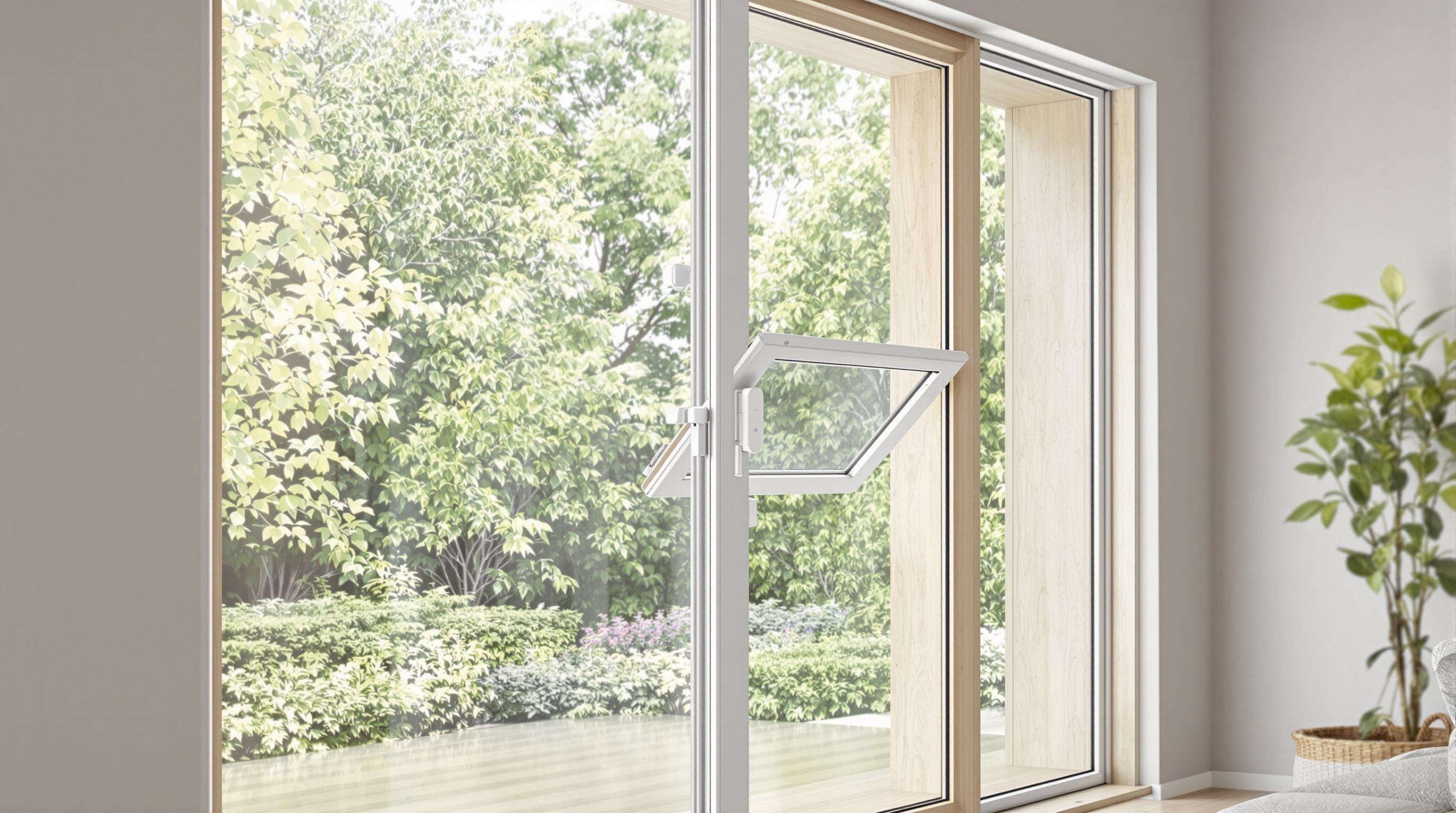Sliding Windows as Bridges to Indoor-Outdoor Living
Modern architecture emphasizes seamless indoor-outdoor flow. Sliding windows function as design elements that break down existing walls dividing and visual and physical spaces. They have large glass panels to maximise views, yet they are double-glazed for both thermal performance and structural strength. This continuous connection adds 27% more perceived interior space (Journal of Architectural Design 2023), turning tight spaces into spacious, light-filled rooms connected to patios, gardens, and the natural landscape.
These types of window systems take practical functionality to the next level, offering great control of your environment, as well as safety and good looks. Unlike traditional swing doors, sliding doors occupy minimal space and do not require a clearance for opening and closing, saving precious square footage, which is especially attractive in urban living spaces. Researchers find that homes with well-positioned sliding windows report 65% greater satisfaction with cross-breeze effectiveness (Building Performance Institute 2024).
Along with function, sliding windows provide an incredible amount of aesthetic value. Their sleek profiles complement a minimalist approach, lightly framing outdoor views as living artwork and maintaining subtle sightlines. Lack of vertical muntins ensures you miss no bit of the cinematic landscape view, which reinforces the psychological bond with nature said to decrease cortisol levels by 18 percent (according to the environmental psychology literature).
Natural Light Maximization with Sliding Windows

Floor-to-Ceiling Glass Principles
Contemporary sliding windows use design and structural advancements to allow for floor-to-ceiling glass styles. Long spans of clear tempered glass will not obstruct your view and are supported by minimal framing, yet withstand required loadings. Optimizing low-iron glass minimizes the green tints found in conventional clear glass for better spectrum accuracy of daylight transmission. Such applications use a solar orientation approach to mitigate glare, while leaving 98% visible light transmittance according to glazing performance studies (NFRC 2024).
Case Study: Seamless Light Integration
The second picture is of a Chicago loft renovation with panoramic doors 'Visual transformation'1 [Not my original title] achieved with sliding units. North-oriented installations were done with low-E solar coating to soften the direct light, with brightness being maintained at more than 500 lux during the day. Surveying occupants revealed that 78% reported reduced artificial light dependence paired with enhanced circadian synchrony, confirming the role of architectural integration in augmenting natural lighting benefits in urban settings.
Oversized Window Trend Analysis
At the residential level, home design continues to speed toward bigger glass installations; the average size of sliding panels has increased by 40% since 2020. This rise results from visual connectedness agendas as outlined by biophilic design investigations. Bigger expanses of glass screen low-angled morning/evening light, which standard windows don’t usually get, and triple-pane argon-filled panes deliver maximum R-value – ensuring the added glass doesn’t counteract the benefits of energy efficiency ratings.
Strategic Placement Frameworks
Optimal sliding window positioning employs solar mapping to address seasonal variations. South-facing elevations capture maximum daylight during winter months while summer sunlight control devices reduce overheating risks. Key placement principles include:
- Aligning head heights with structural overhangs for seasonal modulation
- Prioritizing east-west walls for balanced illumination cycles
- Maintaining 5:1 glass-to-floor ratios ensuring adequate brightness distribution throughout interior spaces without glare discomfort.
Contemporary Design Evolution of Sliding Windows
Modern Style Spectrum Analysis
Modern sliding windows have become not only utilitarian but also works of architecture. They've evolved with headwinds of a 72% increase in frameless designs, according to architecture trend surveys (2024), due to demand for more unobstructed sightlines. Today, you can find contemporary iterations ranging from industrial steel-framed numbers for loft conversions to hybrid wood-aluminium numbers in coastal homes. The key: their horizontal orientation works more harmoniously within today’s open-plan spaces than double-hung counterparts do; and, their minimalist sightlines eliminate visual distraction while accommodating panoramic viewing areas. This versatility can be used in any style from Scandinavian minimalism to Japanese Wabi-sabi while matching perfectly with hidden hardware systems.
Minimalist Grille Design Innovations
90% glass-to-frame ratios in sliding window design are now developed in-house using exclusive reinforcement methods. Innovative twist on tradition; how from blocking barriers a new location of an old idea came into play. These developments solve the trade-off between maximum light emission and the safety requirements. Advance features are self checking internal crossbars for the stressing cracks and snap-in replaceable grids options for changing the style of a season. Modern, bumper and grille-free designs also include UV-countering lamination on glass and fineline ceramic frits that preserves visibility but creates a 40% increase in the durability index, but without noticeable borders.
Smart Sliding Windows for Energy Efficiency

Automation Integration Pathways
Thanks to their use of sensor-driven automation, modern smart sliding windows maximize tap energy footprint while providing you a convenient life. Smart systems have become available, pairing with home weather stations which can set up ventilation based on current humidity and temperature readings. At night, smart glass can go into privacy mode and still remain thermally efficient, and motorized locking systems engage when sensors detect storms. These systems reduce HVAC runtime by as much as 70% compared to manually commanded operation (DOE 2023) placing equal emphasis on conservation and adaptability.
Sustainable Glazing Technologies
Sliding sash windows are energy efficient and typically use triple glazing, which offers chances for improved performance comparing to double glazing. It is produced in 3 pane options that are filled with argon gas, and with a low-E coating keeps 98% of UV rays out and hold 85% of house heat during the winter. Newer framing materials such as foam core fiberglass and advanced insulation materials have improved the thermal performance of windows and allowed U-factors to be well below 0.20 in area-specific window designs. Newer product developments in the range include electrochromic glass which automatically varies the level of tint dependent on the changing levels of natural light, helping to reduce solar heat gain.
The Efficiency-Comfort Paradox
The more airtight the seal, the better the insulation, but natural airflow can be stifled, leading to battle between your energy bill and your personal comfort. This is a problem that smart windows solve using predictive algorithms to determine when is the best time for passive cooling. For instance, systems can open vents during pre-dawn breezes in the summer or switch on heat-recovery ventilators in the winter. A 2023 study demonstrated that these adaptive strategies save indoor air quality while reducing mechanical ventilation needs by 40 per cent, balancing efficiency with human comfort.
Tailored Treatments for Sliding Windows
Light Control Solutions
Sliding window coverings offer a compromise between the desire for optimising natural light and restroom/UV protection and a healthy need for privacy. Stacked 60% solar screen mesh and motorized shades can reduce heat gain up to 78 percent (Ponemon 2023) with visibility to the outside preserved. Combining Blackout cellular shades and UV-filtering glazing blocks 99% of harmful rays while allowing daylight to filter indoors. Sheer Bible Retractable sheer panels allow for varying levels of dynamic light modulation responding to daily sun patterns. In applications where precision is critical, graduated tint films provide 40–80% visible light transmission in window zones.
Customized Integration Approaches
Architects increasingly adopt site-specific treatment systems that align with regional sun exposure and architectural geometries. Standard options now include:
- Thermal-break aluminum extrusions with integrated shade pockets
- Recessed track systems for frameless roller blind installations
- Magnetic-mounted prismatic films for rental properties
A 2023 report indicates that 72% of designers are directly focusing on modular solutions that allow for non-destructive, incremental upgrades—for example, adding smart glass functionality to an already installed window. By transforming the classic design of traditional double-hung windows, virtually any home with a double-hung window can now install sliding window treatments at a cost of 30–45 percent by using retrofitting kits with low-profile side channels. Custom height divider rails provides a solution for structural load worries on over-sized installations without Blocking the View.
FAQ
What are the benefits of using sliding windows in modern architecture?
Sliding windows offer a seamless indoor-outdoor flow, enhance spatial perception, maximize natural light, and provide aesthetic value while saving space.
How do sliding windows contribute to energy efficiency?
They utilize automation and advanced glazing technologies like triple glazing and electrochromic glass to optimize energy footprint and maintain thermal efficiency.
What design innovations are associated with modern sliding windows?
Modern sliding windows incorporate frameless designs, minimalist grille designs, and smart automation, enhancing both functionality and aesthetics.
How do sliding windows enhance natural light in a home?
With floor-to-ceiling glass principles and strategic placement, they allow maximum light transmission while controlling glare and maintaining visibility.
Can sliding window treatments be customized?
Yes, they can be customized using site-specific solutions, modular upgrades, and retrofitting kits to suit various architectural settings.

